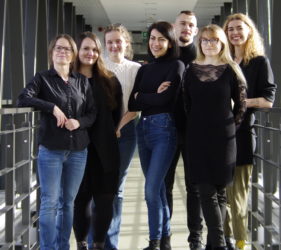RNA processing includes processes such as 5’ and 3’ end transcript maturation, splicing, alternative splicing, or further trimming of mature RNAs into smaller fragments. All of these processes are our subject of interest.
At present, the research that we are most interested in is to study the diverse functions of U7 snRNA/U7 snRNP in the cell. Moreover, we are trying to specify the mutual interactions of U7 snRNP with two proteins, FUS, and hnRNP UL1, in the context of the expression (transcription and 3’ end processing) of replication-dependent histone genes.
Recently, we also observed that FUS can be involved in the synthesis of sdRNA – snoRNA-derived small RNAs. We are going to elucidate the role of FUS in sdRNA biogenesis and further to describe the role of sdRNAs in human gene expression.
Interestingly, mutations in the FUS gene were identified in patients with an inherited form of neurodegenerative disease, amyotrophic lateral sclerosis, ALS. ALS-linked FUS mutants are improperly localized in aggregates within the cytoplasm, which negatively affects FUS nuclear function. Mislocalized protein also sequesters other RNA-binding proteins and U snRNPs, resulting in extensive pre-mRNA processing defects. Currently, we are analyzing how ALS-FUS mutants affect U7 snRNP function and replication-dependent histone gene expression in glial cells and neurons of ALS patients. Further consequences of ALS-linked FUS mutations on other cellular processes, involving FUS, U7 snRNA/snRNP, and hnRNP Ul1 will also be investigated. It might be relevant to altered glial cells and motor neurons homeostasis in ALS.





